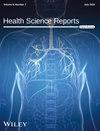Data Mining of Infertility and Factors Influencing Its Development: A Finding From a Prospective Cohort Study of RaNCD in Iran
Abstract
Background and Aims
Infertility, as defined by the World Health Organization, is the inability to conceive after 12 months of regular, unprotected intercourse. This study aimed to identify factors influencing infertility by applying data mining techniques, specifically rule-mining methods, to analyze diverse patient data and uncover relevant insights. This approach involves a thorough analysis of patients' clinical characteristics, dietary habits, and overall conditions to identify complex patterns and relationships that may contribute to infertility.
Methods
In this study, we examined the impact of lifestyle factors on infertility using machine learning and data mining techniques, specifically Association Rules. The study included a total of 4437 women who participated in the Ravansar Non-Communicable Disease Cohort study. Among the remaining participants, 434 were infertile. We utilized 38 variables to generate the relevant association rules.
Results
As a result, the analysis reveals that 97% of infertile women are likely to cook for more than 2 h and engage in standing activities. Additionally, 94% of infertile women are likely to have central obesity. Infertile women also have a 73% chance of reusing cooking oil and a 74% chance of consuming fried food at least once a week. The likelihood of infertility increases to 98% among women who use more than 24 eggs per month and to 97% among those who consume moldy jam or syrup. The evaluation of these associations was further supported by measures of support, confidence, and lift.
Conclusion
This study showed that key lifestyle factors linked to infertility, underscoring the role of lifestyle in reproductive health. These findings suggest that targeted interventions and lifestyle changes may help reduce infertility rates. Further research is needed to confirm these associations and investigate the underlying mechanisms.


 求助内容:
求助内容: 应助结果提醒方式:
应助结果提醒方式:


